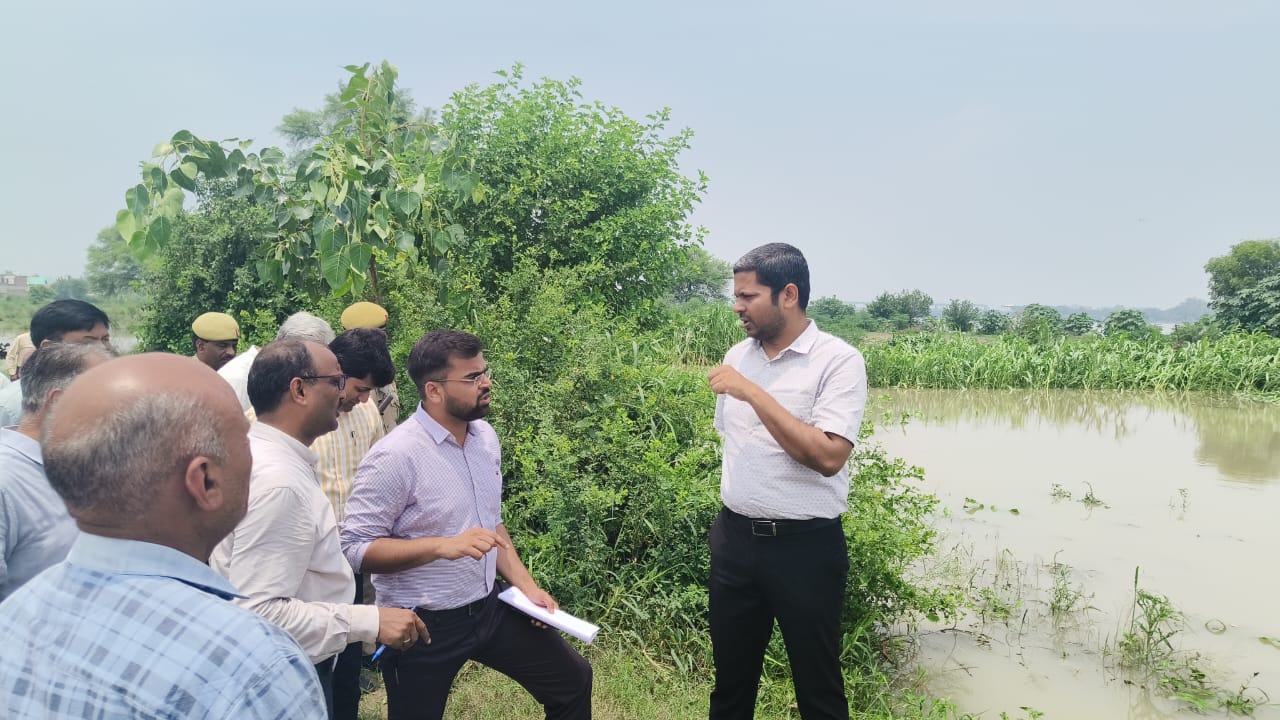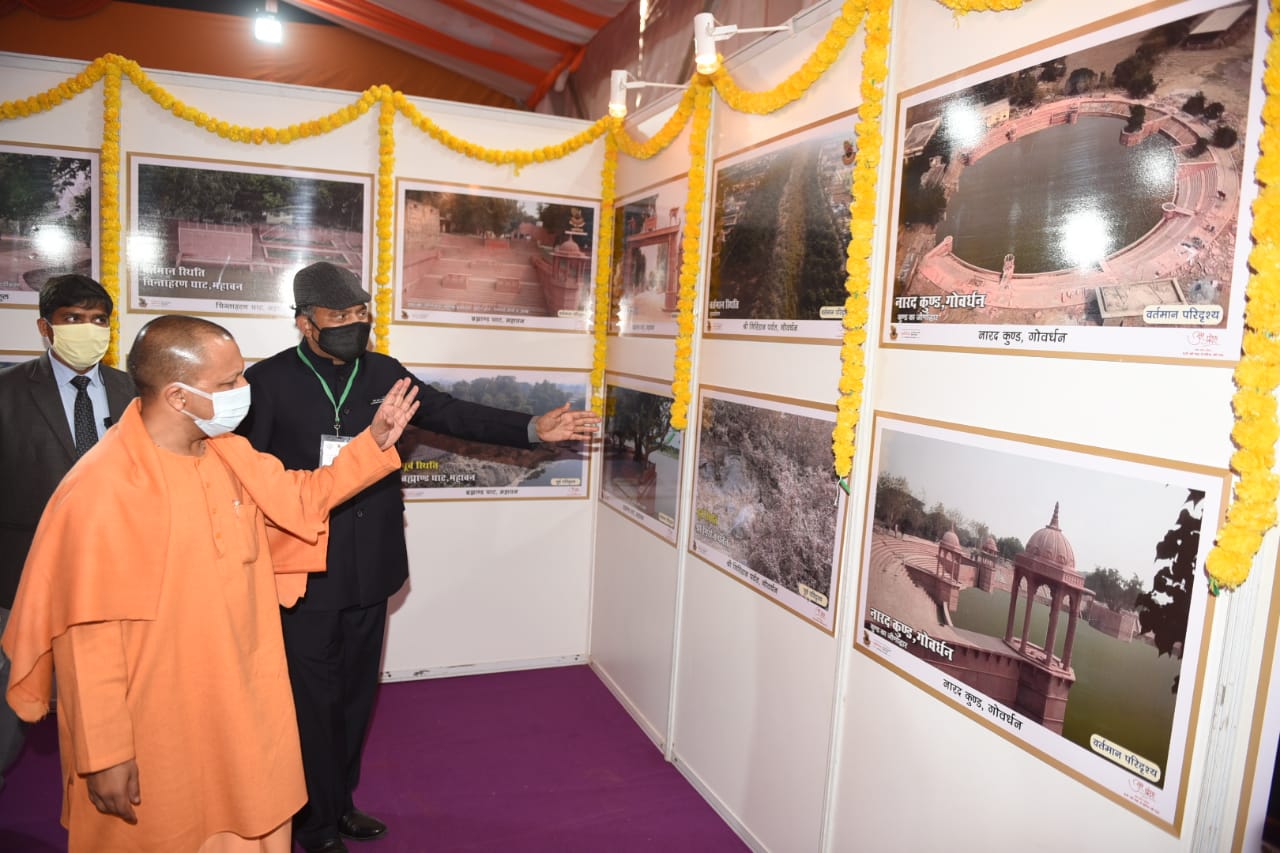The gradual encroachment on the floodplains continues unabated, compounding the already grave dangers associated with flooding.
2023.07.13 (Vrindavan Today News): Police stations along the banks of Yamuna River in Mathura have been put on alert following water level in Yamuna reaching 164.06 metres due to incessant rainfall in Uttarakhand and Himachal Pradesh, officials said.
As the Yamuna river continues to rise, posing a risk of flooding in several Sub-divisions of the district including Chhata, Sadar, Mant, and Mahavan, the local administration has swiftly sprung into action to tackle the imminent threat. Anticipating the adverse impact on villages situated along the riverbanks, the district authorities have initiated comprehensive preparations to mitigate the potential damage caused by flooding.
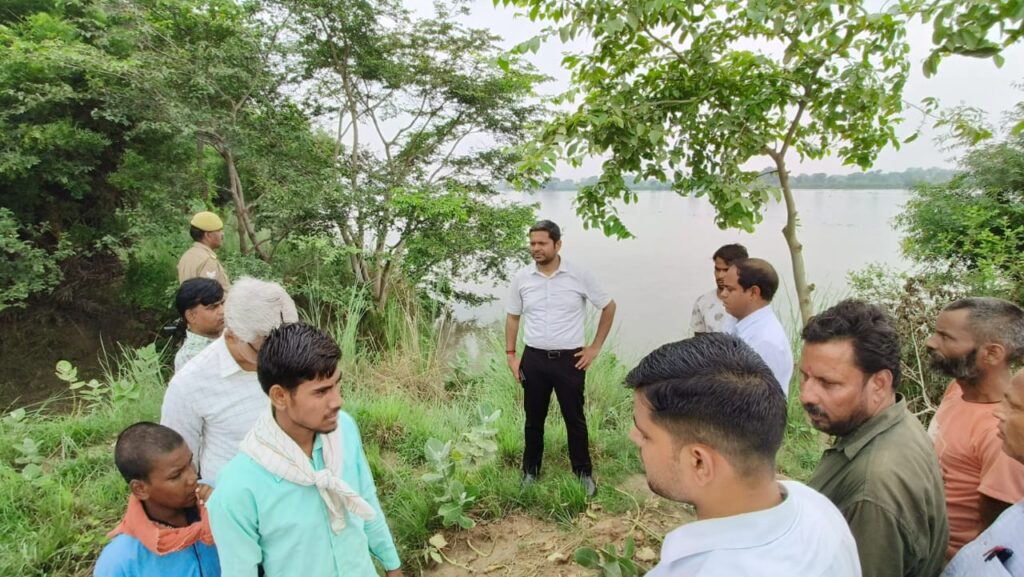
In a bid to tackle the situation effectively, the district administration has classified the flood-affected villages in each tehsil into three categories: low flood, medium flood, and high flood. By categorizing the villages based on the expected severity of the flooding, officials can efficiently allocate resources and prioritize relief efforts.
The Yamuna River has been witnessing a continuous surge in water levels over the past 24 hours, prompting concern among authorities and residents. The excess water being released from the Tajewala area has reached a staggering volume of 3 lakh cusecs as of six o’clock on Monday morning.
The water level at Mathura Prayag Ghat has surged to 164.06 meters, sounding the alarm bells for potential flooding in the region. In response to this critical situation, additional water discharge from the Gokul Barrage towards Agra has been initiated.
The process of releasing 1.90 lakh cusecs of fresh water into the Yamuna commenced at five o’clock on Sunday evening. By midnight, this quantity had risen to 2.51 lakh cusecs. Moreover, by 6 am on Monday, the water release had surpassed the three lakh cusecs mark. However, the discharge was reduced back to 1.9 lakh cusecs as of 2 pm. The sustained release of over two lakh cusecs of water for a consecutive period of 24 hours is considered a dangerous sign.
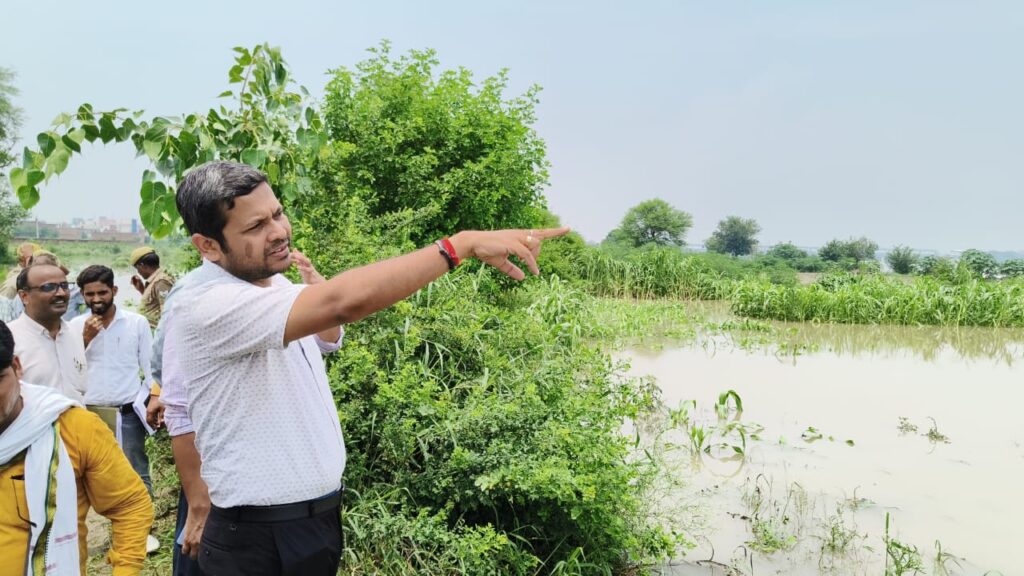
It is estimated that the water released will take approximately four to five days to reach the district. Meanwhile, the authorities have also initiated the release of additional water from the Gokul Barrage to Agra. At six o’clock in the morning, the discharge rate stood at 10,752 cusecs, which then escalated to over 16,000 cusecs by two o’clock in the afternoon. As of five o’clock in the evening, the quantity of water being released had surged to 31,466 cusecs.
Despite these developments, the local administration is not currently classifying the situation as an imminent disaster. Shri Yoganand Pandey, ADM (Finance) and officer in charge of flood management, affirmed that there is no cause for immediate concern. While the water level is rising in the upper regions due to heavy rainfall, the administration is closely monitoring the additional release of fresh water.
With the primary focus on preemptive action, the district administration has developed a comprehensive flood control action plan. The plan encompasses identifying flood checkpoints, establishing camp locations, and designating areas to resettle affected individua
ls from flood-prone villages. Each tehsil (sub-division) has a dedicated system in place to address the specific challenges posed by flooding.
To ensure the safety and well-being of the affected populace, the authorities have constructed 40 flood posts in areas adjacent to the Yamuna River. Additionally, provisions have been made for emergency animal aid camps to extend assistance to livestock in distress. The Supply Department and the Health Department have been assigned specific responsibilities within the flood control action plan.
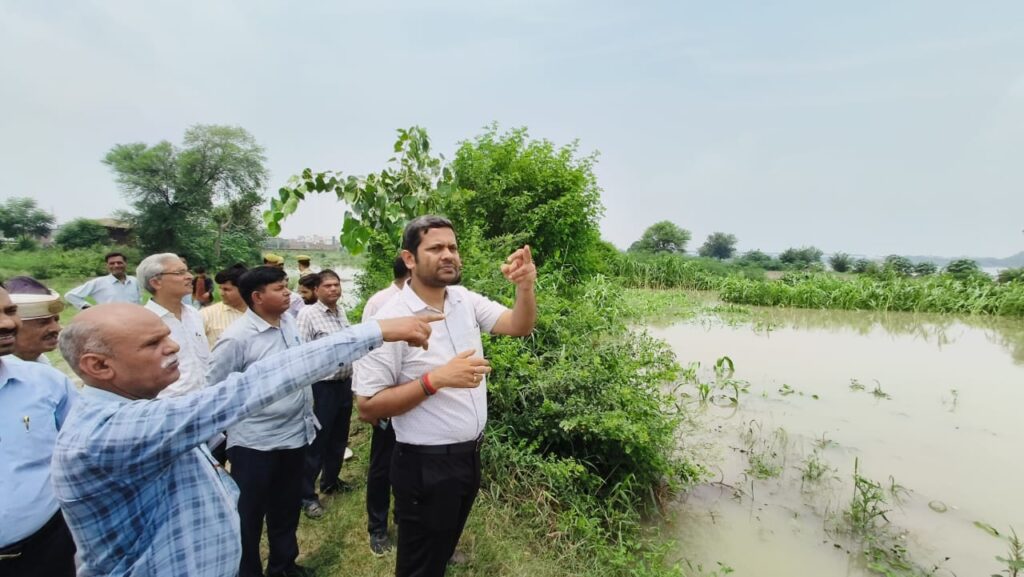
To address the diverse needs of the population, the camp locations have been strategically selected based on the population density of the respective villages. This approach allows for efficient accommodation and provision of essential services during flood situations. Moreover, the administration has devised contingency plans and made arrangements to manage flood-related challenges associated with distributaries, drains, and canals traversing different areas of the district.
One recurring and increasingly urgent issue that demands immediate attention is the persistent problem of encroachment on the Yamuna floodplains, exacerbating the risk of catastrophic floods. It is crucial to acknowledge that rivers require sufficient space to naturally disperse and contain floodwaters, safeguarding the integrity of the ecosystem and the well-being of communities.
Unfortunately, the gradual encroachment on the floodplains continues unabated, compounding the already grave dangers associated with flooding. Despite being reminded of this critical issue time and again, substantive action to address the encroachment remains conspicuously absent, leaving the region highly vulnerable to devastating consequences. The preservation of the Yamuna floodplains is a matter of utmost urgency, demanding immediate measures to prevent further encroachment and mitigate the imminent threats posed by floods. Failure to take decisive action will only perpetuate the cycle of inaction and jeopardize the safety and livelihoods of countless individuals and the delicate balance of the ecosystem.
It is imperative that concerned authorities and stakeholders recognize the urgency of this issue and collaborate effectively to safeguard the future of the Yamuna floodplains and the communities that depend on them.
This article is sponsored by the Century Ply



